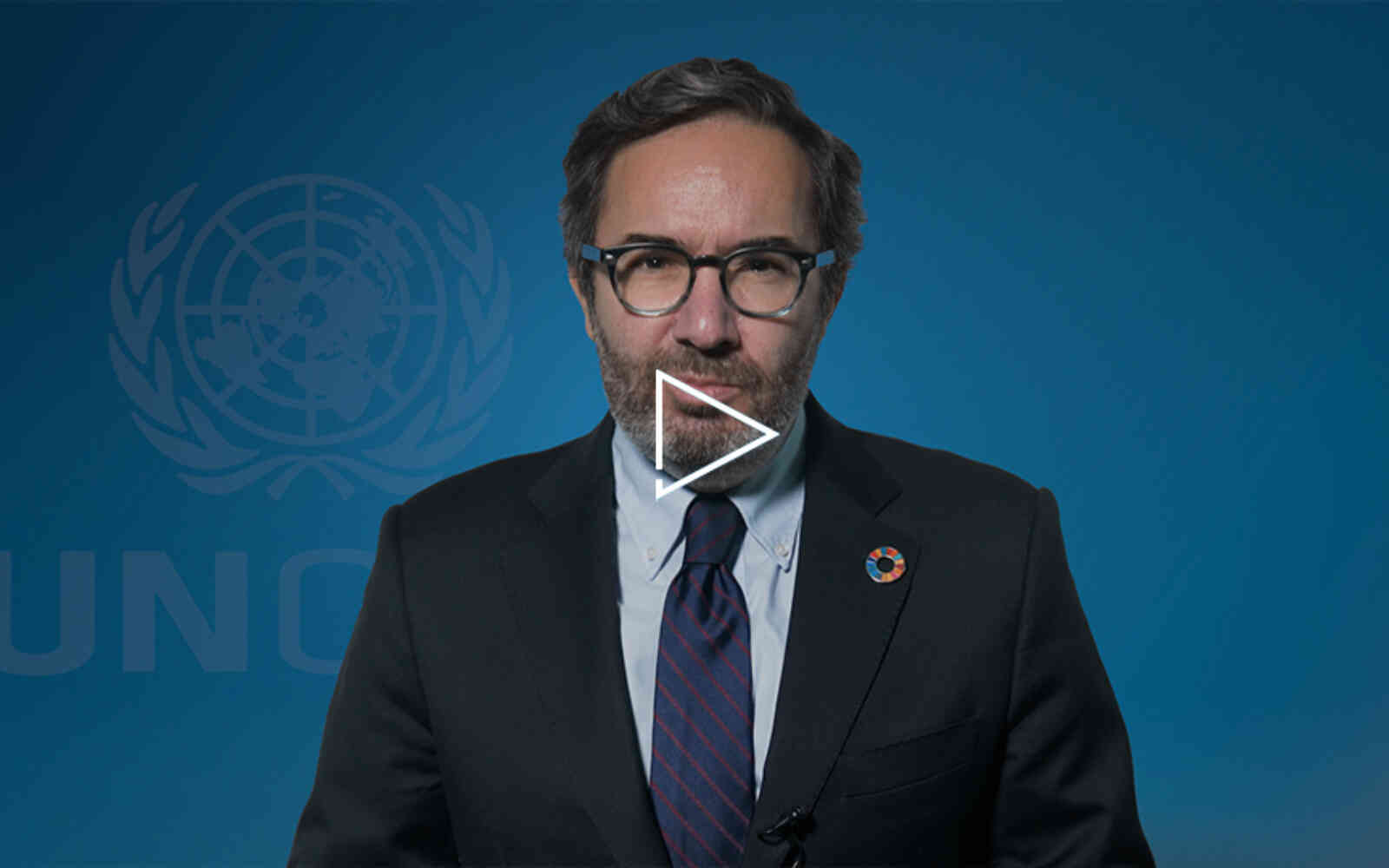The United Nations Office for Project Services (UNOPS)
Los ODS cambian nuestra forma de colaborar con el sector privado
UNOPS can help lead the way towards smart collective solutions on infrastructure and investment for sustainable development.
When the world came together last year and adopted the Sustainable Development Goals (SDGs), it put into action a roadmap to achieving a better world by 2030. The SDGs are a comprehensive checklist for development – think of them as a blueprint for our children’s future. They issue a call to action for schools and education, for well-functioning health systems, for access to sustainable energy, food security, water and sanitation, along with goals for good governance and justice for all the world’s people.
‘Smart infrastructure’
Building new infrastructure is one of the most important pre-requisites for achieving the SDGs by 2030. Infrastructure is also key to our world’s increasingly complex humanitarian agenda. Future housing should be resilient to earthquakes and natural disasters. Roads should withstand the floods that come with climate change. Urbanisation must not lead to increased road transportation. Area-planning must be considered through the lens of sustainability. The way to do this is by planning and implementing infrastructure investments through a holistic systems thinking.
This means changing national infrastructure plans from wish lists of individual projects to considering how the individual projects would influence and be dependent on each other so that they are done in the right order and adapted to a realistic scale. Of course, resilience planning – making sure structures can withstand large environmental shocks – must also be built into all of our infrastructure work around the world. This ‘smart infrastructure’ will save tremendous amounts of money in preventing waste or the need to rebuild after disasters. Yet, to get there will require trillions of dollars of investment over the coming 15 years.
The needs for 2030 are simply too great for a single stream of funding, such as government funding or national private sector funding. Traditional development aid is not predicted to increase much from its present level of around US$150 billion a year and will at best provide a fraction of these needs. So, what can we do?
Smart finance
While public revenue is gradually growing in developing countries and will play an increasing role in paying for needed infrastructure, the large untapped potential for infrastructure funding lies with the private sector. Pension funds and other large investors have already adopted bold goals for high-sustainability investments, with potentially billions of dollars earmarked for investments in developing countries. However, private sector capital is reluctant to invest in low and middle-income countries where the risks are seen as too high.
Finding private sector capital for development projects that aim at providing basic services to the poor – and therefore may offer a limited return – is particularly challenging. This is where smart solutions are needed. We can counter the risk in several ways: by pooling funding from several private investors into social impact investment funds, the risk is spread. By using aid as loss guarantees rather than using it to pay for infrastructure, aid money can go much further and leverage many times as much funding from the private sector. And the UN can also play an important role in reducing risk. Through its integrity, its values and its considerable experience from working in challenging economic and political environments, the UN can reassure investors and lower some of the risks a purely private sector project would be vulnerable to. Brought together, the pooling of funds, the smart use of aid money, and UN expertise can bring risks down to acceptable levels and allow private sector projects to go ahead in countries and sectors where they so far have not been attempted.
The organisation I lead, United Nations Office for Project Services (UNOPS), is currently looking at ways to lower obstacles and risks so that private investment vehicles can invest in these massive infrastructure needs. We still have a long way to go before we see significant private sector investment in sustainable development in lower-income countries. Different parties need to come together to work collaboratively – host governments, aid donors, institutional investors and entrepreneurs. Yet, if we want a cleaner and more just world for future generations, private investment in development operations – paired with public funds and strong public planning – is the only way to get there. UNOPS will help lead the way.










